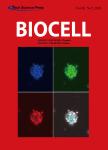Tissue specific prediction of N^(6)-methyladenine sites based on an ensemble of multi-input hybrid neural network
作者机构:School of ScienceDalian Maritime UniversityDalian116026China School of Computer Science and Software EngineeringUniversity of Science and Technology LiaoningAnshan114051China
出 版 物:《BIOCELL》 (生物细胞(英文))
年 卷 期:2022年第46卷第4期
页 面:1105-1121页
核心收录:
学科分类:0710[理学-生物学] 0831[工学-生物医学工程(可授工学、理学、医学学位)] 0711[理学-系统科学] 07[理学] 08[工学] 081101[工学-控制理论与控制工程] 0811[工学-控制科学与工程] 071102[理学-系统分析与集成] 081103[工学-系统工程]
基 金:supported by the National Natural Science Foundation of China(Nos.62071079 and 61803065)
主 题:M6A sites Deep hybrid neural networks Ensemble model Feature selection
摘 要:N^(6)-Methyladenine is a dynamic and reversible post translational modification,which plays an essential role in various biological *** of the current inability to identify m6A-containing mRNAs,computational approaches have been developed to identify m6A sites in DNA *** to improve prediction performance,we introduced a novel ensemble computational approach based on three hybrid deep neural networks,including a convolutional neural network,a capsule network,and a bidirectional gated recurrent unit(BiGRU)with the self-attention mechanism,to identify m6A sites in four tissues of three *** a total of 11 datasets,we selected different feature subsets,after optimized from 4933 dimensional features,as input for the deep hybrid neural *** addition,to solve the deviation caused by the relatively small number of experimentally verified samples,we constructed an ensemble model through integrating five sub-classifiers based on different training *** compared through 5-fold cross-validation and independent tests,our model showed its superiority to previous methods,im6A-TS-CNN and iRNA-m6A.



